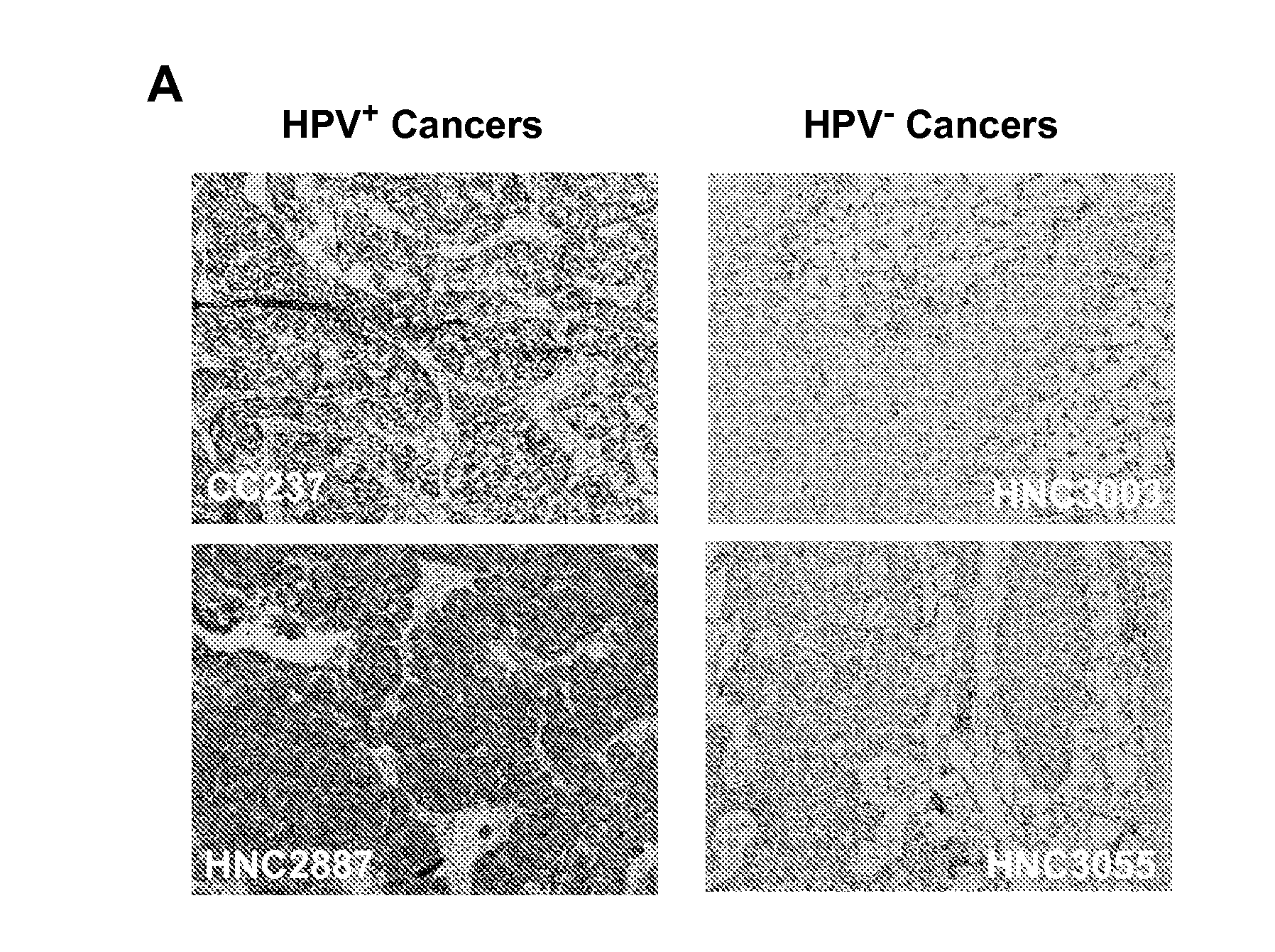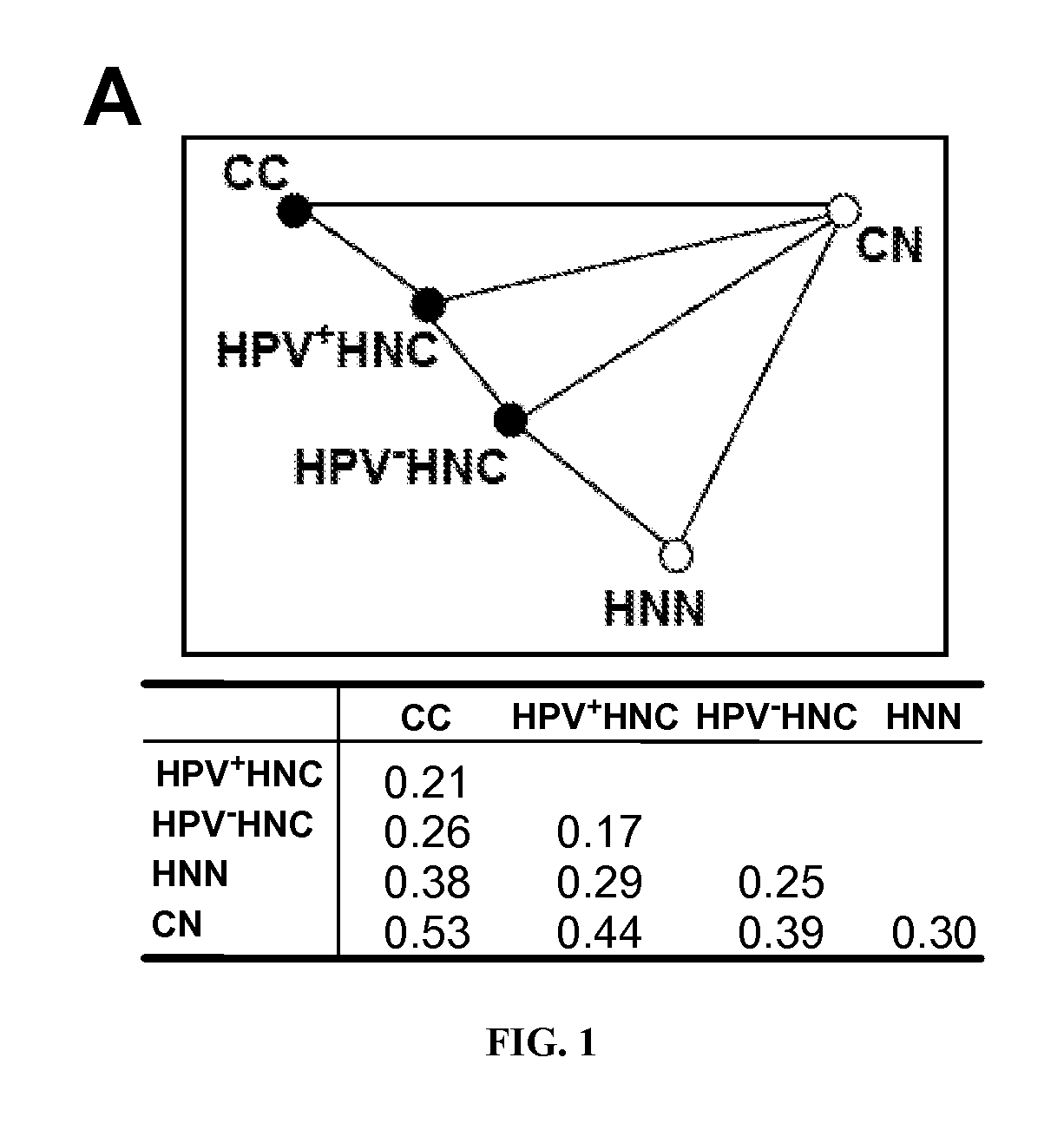Biomarkers For Human Papilloma Virus-Associated Cancers
a human papilloma virus and cancer technology, applied in the field of biomarkers for human papilloma virus-associated cancers, can solve problems such as morbidity and mortality
- Summary
- Abstract
- Description
- Claims
- Application Information
AI Technical Summary
Benefits of technology
Problems solved by technology
Method used
Image
Examples
example 1
Differences in Gene Expression in Human Papillomavirus-Positive and -Negative Head / Neck and Cervical Cancers and Gene Expression in Preneoplastic Lesion of Cervical Cancer
APPENDIX I
[0057]Appendix I provides supplementary methods figures, and tables and is herein incorporated by reference in its entirety.
[0058]Materials and Methods
[0059]Tissue samples: 15 and 27 HNC samples were from the University of Iowa and Harvard School of Public Health, respectively. 5 and 9 FINN samples were from the University of Iowa and the National Disease Research Interchange (NDRI), respectively (Supplementary Table S1). CC and normal cervical samples were from the Gynecologic Oncology Group. Patient information is presented in Table 1A and Supplementary Table S1. All tissue samples were fresh frozen in liquid nitrogen and collected with patients' consent under approval of the Institutional Review Boards from all participating institutions. Also, all the tumor samples were primary resections collected be...
example 2
Confirmation of TCAM1, SYCP2 and STAG3 Expression in Human Papillomavirus-Positive Cancers
[0089]Materials and Methods
[0090]The above methods were repeated in a second, but larger, group of subjects. The group consisted of 128 samples collected. 79 were HPV+ and 47 were HPV−. Additional details on the subjects are shown below in Table 3.
TABLE 4Patient information.Cases and ControlsN = 128 100%Normal Controls OnlyN = 1612.5%Cases OnlyN = 11287.5%PathologyCIN1N = 1410.9%CIN2N = 2116.4%CIN3N = 4132.0%CancerN = 2821.9%MetaplasiaN = 7 5.5%Adenocarcinoma in situN = 1 0.8%
[0091]Results
[0092]As shown in FIG. 7, TCAM1, SYCP2 and STAG3 were significantly upregulated in HPV+ samples, confirming the result shown above in Example 1.
PUM
 Login to View More
Login to View More Abstract
Description
Claims
Application Information
 Login to View More
Login to View More - R&D
- Intellectual Property
- Life Sciences
- Materials
- Tech Scout
- Unparalleled Data Quality
- Higher Quality Content
- 60% Fewer Hallucinations
Browse by: Latest US Patents, China's latest patents, Technical Efficacy Thesaurus, Application Domain, Technology Topic, Popular Technical Reports.
© 2025 PatSnap. All rights reserved.Legal|Privacy policy|Modern Slavery Act Transparency Statement|Sitemap|About US| Contact US: help@patsnap.com



